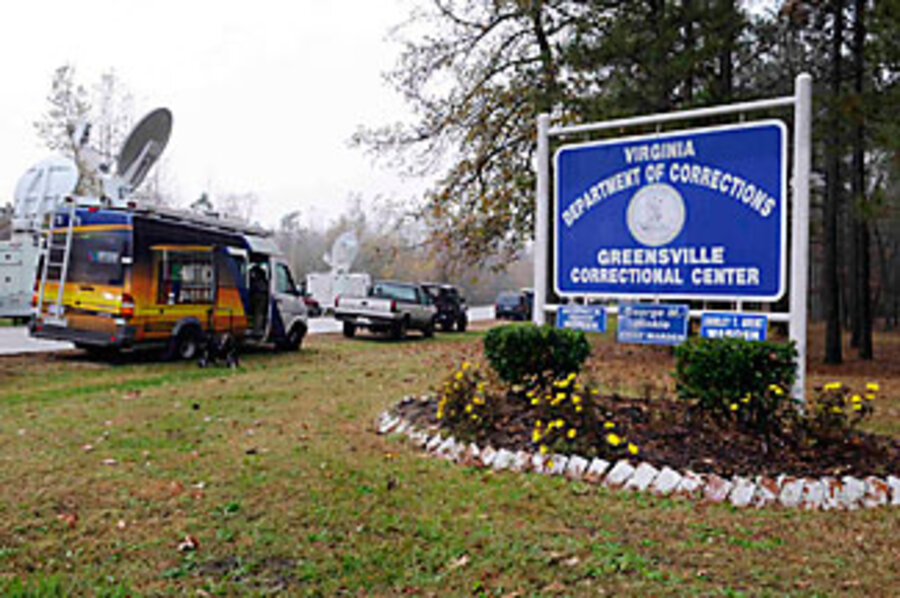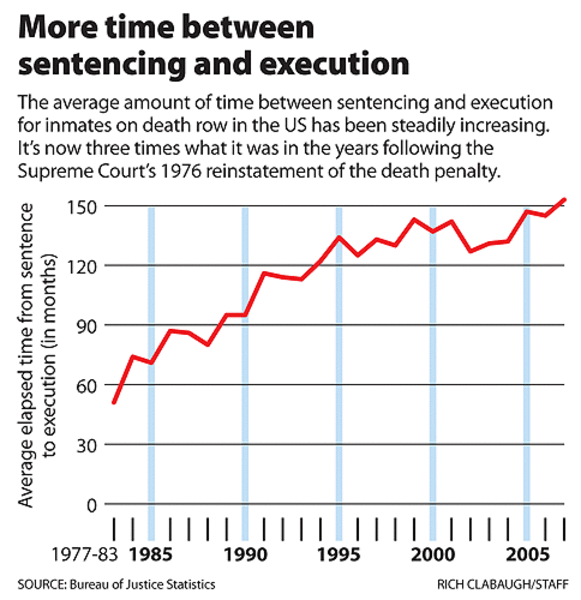DC sniper execution: why his case moved so quickly
Loading...
John Allen Muhammad, the convicted D.C. sniper, is scheduled for execution in Virginia Tuesday night, after Gov. Tim Kaine (D) denied a request for clemency Tuesday afternoon.
It has been almost six years since Mr. Muhammad was sentenced to death for the murder of Dean Meyers, one of the 10 people killed during apparently random sniper attacks in the Washington, D.C., area in September and October 2002.
With approximately 68 months between his sentencing and scheduled execution, Muhammad's case has taken roughly half the typical duration for death-penalty cases. Nationally, it takes on average 153 months – almost 13 years – between sentencing and execution for death-row inmates, according to 2007 data from the Bureau of Justice Statistics.
The Supreme Court noted the accelerated pace of Muhammad's execution in its decision Monday not to hear his case or delay his execution.
"By denying Muhammad's stay application, we have allowed Virginia to truncate our deliberative process on a matter – involving a death row inmate – that demands the most careful attention," Justice John Paul Stevens wrote in a statement explaining the court's rejection of the Muhammad appeal. "This result is particularly unfortunate in light of the limited time Muhammad was given to make his case in the District Court."
Death-penalty expert Michael Radelet, a professor at the University of Colorado at Boulder, agrees that Muhammad's case is "quicker than most cases."
The bulk of cases that move swiftly toward execution tend to be "consensual executions," Professor Radelet says, citing the case of Timothy McVeigh. He was executed in 2001, four years after his sentencing for the murder of eight federal agents in the Oklahoma City bombing. In 2000, a judge granted Mr. McVeigh's request to drop his remaining appeals and expedite his execution.
Still, the relative short nature of Muhammad's case is typical of Virginia death-row cases.
"The Virginia Supreme Court hears appeals very, very rapidly," says David Bruck, director of the Virginia Capital Case Clearinghouse at Washington and Lee University School of Law in Lexington, Va. "The case is through the first level of appeal typically within a year, whereas in other states it can take two to three years or even more."
The state has handled capital cases this way since the US Supreme Court reinstated the death penalty in 1976, Professor Bruck says.
Although Virginia is among the states that have executed the most prisoners since 1976, it has a relatively small death row, says Scott Sundby, also a professor at Washington and Lee. This is because Virginia cases don't bottleneck in the appeals process, as they might in states like California and Texas, which sentence inmates to death more frequently.
However, Virginia has been moving away from the death penalty in recent years. In 2005, Virginians voted for Kaine over law-and-order conservative Jerry Kilgore, who campaigned on a pro-capital-punishment platform. Kaine has subsequently vetoed legislative attempts to expand crimes eligible for the death penalty.
Additionally, in the past 20 months, no new death penalties have been imposed in Virginia's courts – something that Bruck believes represents an unprecedented stretch in Virginia's history.
-----
Follow us on Twitter.







